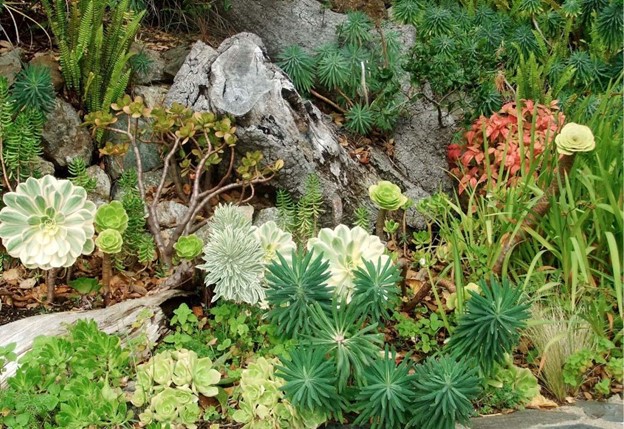
If you’re looking to reduce your water consumption, there’s no better place to start than your own yard. Whether you’re planting annuals or putting in new shrubs and trees, there are plenty of drought-tolerant gardening tips you can follow to create a beautiful garden with less water.
Drought-Tolerant Plants for the Garden
The best plants for low-water gardens are xeric plants (from the Greek word meaning dry) which are hardy and do well in dry climates. These plants have developed over time to be drought tolerant and use less water than traditional garden varieties.
Trees
Deodar Cedar
Norway Spruce
Smoke Tree
Shrubs
Arbutus unedo ‘Compacta’
Ceanothus
Mugo Pine
Pacific Wax Myrtle
Perennials
Lavender
Rosemary
Echinacea
Hebe
Sweet Potato Vine
Fountain Grass
Daylilies
Another option is drought-tolerant ground covers like creeping thyme or purple sage. These types of plants will not only make your garden look lovely but will help conserve water as well!
These plants will still need to be watered during dry spells for the first year or two until they become established. Once established, these water-thrifty plants will save you time.
Keep your soil in check with mulch
Compost and mulch are two of the easiest ways to retain moisture in your garden. A layer of mulch can cut down on water consumption by up to 50%. Compost is also an excellent addition to any soil because it will increase the amount of organic matter present in the soil. Organic matter increases the water-holding capacity of soils and improves nutrient availability. These two materials will both help you create a beautiful garden that won’t need much watering!
 Plant closer together
Plant closer together
Plant trees and shrubs closer together to provide shade and reduce the need for watering. Put large plants in the center of your garden, or place small plants around them to offer them some protection from strong winds.
Use Stones for Visual Interest
Using stones is one way to add interest to your garden. Stones are natural materials that are found in nature and can be used as focal points in your landscaping. They can also be used to create paths throughout the garden as well as act as barriers and even create shade around plants that need to be protected from the sun.
Dry Creek Beds
You may want to consider adding a dry creek bed to your drought-tolerant landscape. A dry creek bed is a type of garden design that mimics the natural environment by including rock or gravel as pathways and raised beds where plants can be planted.
Install a Water Feature
Installing a fountain in your drought-tolerant garden can actually help reduce water consumption. Typically fountains use about 3 gallons of water per hour. A typical backyard fountain can use up to 300 gallons of water per day. If you are using an electric pump then the cost is more as well. An aerating fountain only uses 3-5 gallons of water per hour. This type of fountain recycles the same amount of water over and over again without ever recharging the reservoir tank with new water.

